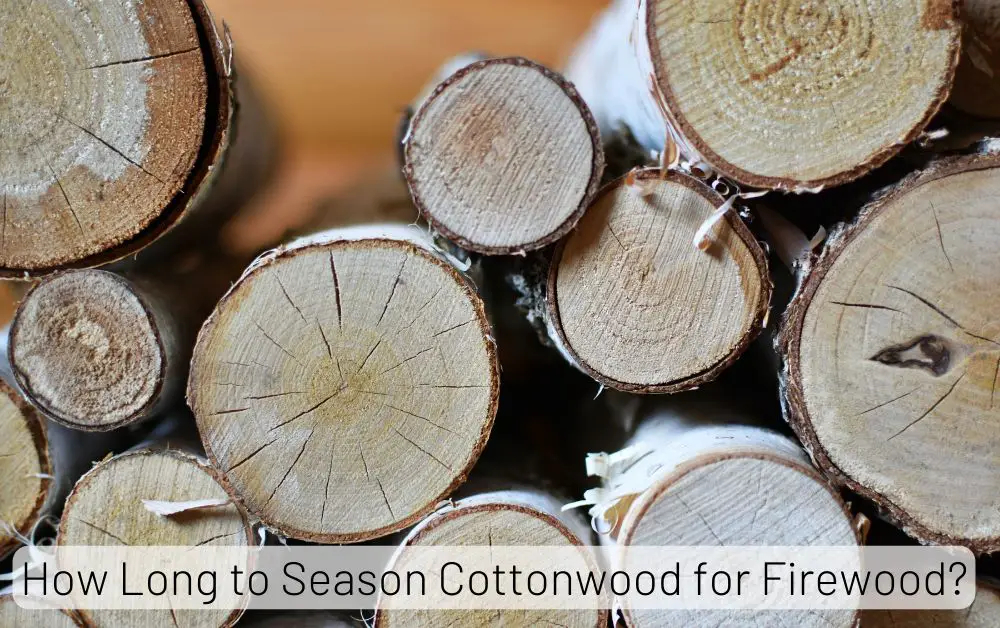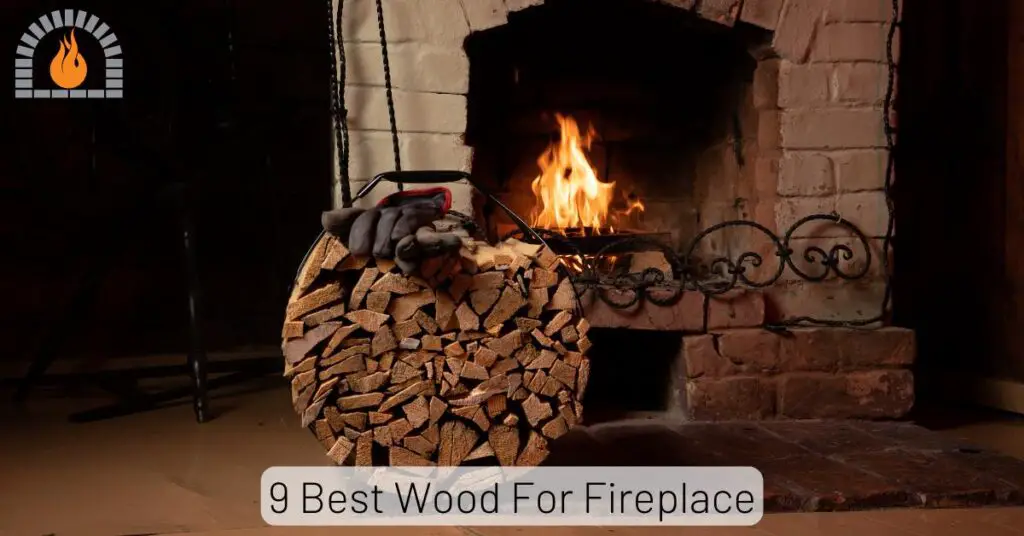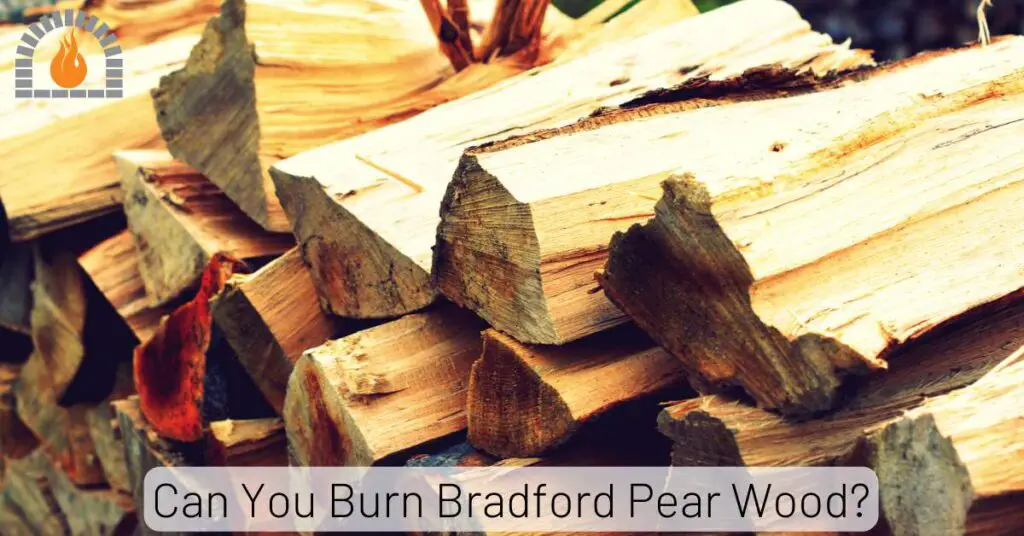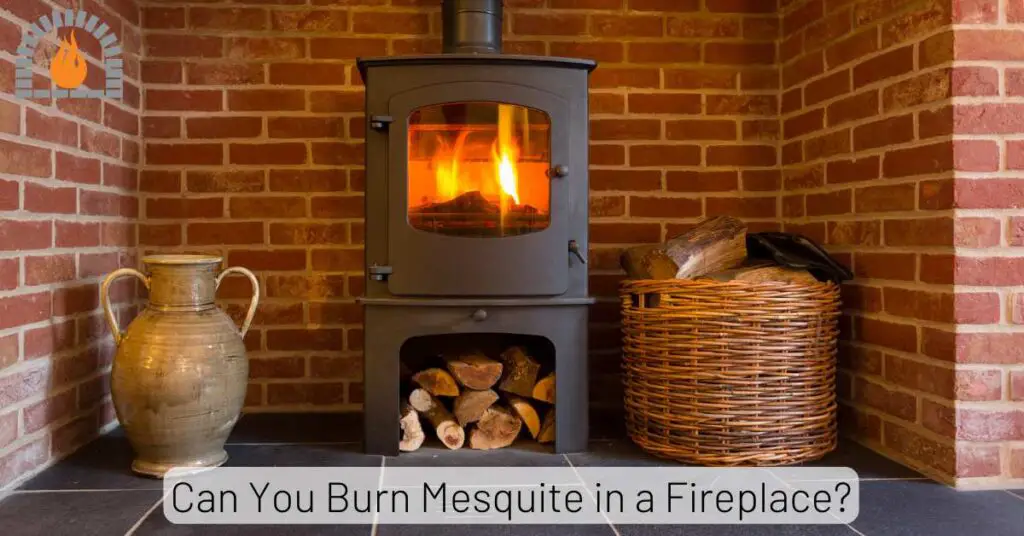Elm firewood offers a moderate heat output of 20-24 million BTUs per cord, making it a decent mid-range firewood option that’s widely available across North America. While not as hot-burning as oak or hickory, properly seasoned elm produces a pleasant, mild aroma and relatively low smoke, making it suitable for both heating and occasional fireplace enjoyment.
When dried to the optimal 20% moisture content or less, elm firewood provides steady, long-lasting coals that can keep your home warm throughout the night, though it may require more frequent stoking compared to denser hardwoods.
Key Takeaways
- Elm firewood provides moderate heat output (20-24 million BTUs per cord)
- It requires proper seasoning for 6-12 months due to its high initial moisture content
- Elm is widely available and often more affordable than premium firewoods
- It produces minimal sparks and has a pleasant, mild aroma when burned
- Dutch elm disease has made standing elm trees more available for firewood
- Proper storage and drying techniques significantly improve elm’s burning performance
What is Elm Wood?
Elm wood comes from trees in the Ulmus genus, which includes several species common across North America, Europe, and Asia. These deciduous trees are known for their distinctive vase-shaped growth pattern and serrated leaves. Historically, elm was prized for furniture making, shipbuilding, and floorboards due to its interlocking grain pattern that provides excellent strength and resistance to splitting.
In recent decades, elm populations have been significantly impacted by Dutch elm disease, a fungal infection spread by bark beetles. This has unfortunately led to many dead or dying elm trees that need to be removed, creating a sustainable source of firewood that would otherwise go to waste.
The wood itself is characterized by its light to medium brown color, sometimes with reddish hues, and a prominent grain pattern. When used as firewood, elm has distinct characteristics that make it worth considering for your heating needs.
Is Elm Good Firewood? A Detailed Analysis
When homeowners ask “is elm good firewood,” the answer depends on their specific needs and expectations. Elm falls into the category of decent, though not exceptional, firewoods. It’s classified as a hardwood, though it’s less dense than premium firewoods like oak, hickory, or maple.
The heat output of elm firewood is moderate, typically producing 20-24 million BTUs per cord when properly seasoned. For comparison, red oak produces about 24-26 million BTUs per cord, while hickory can reach 27-30 million BTUs per cord. This means elm will provide solid heat, though you may need to burn slightly more volume compared to denser woods to achieve the same heating effect.
One of elm’s notable characteristics is its relatively high initial moisture content, even when the tree appears dead. This makes proper seasoning absolutely crucial. Freshly cut elm can have a moisture content exceeding 60%, which needs to be reduced to below 20% for efficient burning.
When properly prepared, elm firewood produces steady, medium-lasting coals and generates minimal sparks, making it relatively safe for open fireplaces. It also produces a pleasant, mild aroma that many people find appealing, without the strong smoke associated with some other firewoods.
Elm Firewood: Key Statistics
Understanding the numerical data behind elm firewood helps evaluate its suitability for your needs. Here’s a comprehensive look at elm’s key statistics compared to other common firewoods:
| Firewood Type | Heat Output (Million BTUs per Cord) | Density (lbs per cubic foot) | Seasoning Time (Months) | Coaling Quality | Spark Production |
|---|---|---|---|---|---|
| Elm | 20-24 | 35-40 | 6-12 | Moderate | Low |
| Red Oak | 24-26 | 43-47 | 12-24 | Excellent | Low-Moderate |
| Hickory | 27-30 | 50-55 | 12-24 | Excellent | Moderate |
| Maple | 23-25 | 40-45 | 6-12 | Good | Low |
| Ash | 22-24 | 38-42 | 6-12 | Good | Low |
| Pine | 15-17 | 25-30 | 3-6 | Poor | High |
Source: Wood Heating Resource from Oregon State University Extension Service
As the data shows, elm sits in the middle range for most metrics. It’s not the highest performer in any category but offers a balanced profile that makes it a practical choice for many homeowners.
Pros of Using Elm as Firewood
Elm firewood offers several advantages that make it worth considering for your heating needs:
Availability and Sustainability
Due to Dutch elm disease, there’s an abundance of dead or dying elm trees that need to be removed. This creates a readily available and sustainable source of firewood. Using these diseased trees for fuel is environmentally beneficial as it utilizes a resource that would otherwise go to waste.
Moderate Heat Output
While not the hottest burning firewood, elm provides sufficient heat for most home heating needs. With 20-24 million BTUs per cord, it delivers solid performance that will keep your home warm during cold weather.
Pleasant Aroma
Elm produces a mild, pleasant aroma when burned, enhancing the ambiance of your fireplace or wood stove. Unlike some woods that can produce acrid smoke, elm’s scent is generally considered enjoyable and not overpowering.
Low Spark Production
Safety is important when burning wood, and elm performs well in this regard. It produces minimal sparks compared to many other firewoods, making it suitable for open fireplaces where sparks could pose a hazard.
Good Coaling Properties
While not exceptional, elm produces decent coals that can help maintain heat through the night. This means you won’t need to tend to your fire as frequently as with some other woods that burn quickly without leaving lasting coals.
Affordability
Due to its abundance, elm firewood is often more affordable than premium firewoods like oak or hickory. This makes it an economical choice for those looking to heat their homes on a budget.
For more information on firewood heat output comparisons, you can visit the University of Missouri Extension’s guide on firewood.
Cons of Using Elm as Firewood
Despite its benefits, elm firewood does have some drawbacks that you should consider:
Difficult to Split
One of the most significant challenges with elm firewood is its interlocking grain pattern, which makes it notoriously difficult to split manually. Many people describe trying to split elm as “trying to split a rope” – the fibers tend to weave together rather than separate cleanly. This often requires a mechanical splitter or significant effort with a maul and wedges.
Long Seasoning Time
Elm contains a high amount of moisture even when the tree appears dead. It typically requires 6-12 months of proper seasoning to reach optimal moisture content below 20%. Some larger pieces may take even longer to dry thoroughly. Burning unseasoned elm results in poor heat output, excessive smoke, and increased creosote buildup.
Moderate Heat Output
While we listed this as a pro in terms of being sufficient for most needs, elm’s moderate heat output can be a con if you’re trying to heat a large space or live in an extremely cold climate. In these situations, you may need to burn significantly more elm compared to denser woods like oak or hickory.
Can Be Smoky if Not Properly Seasoned
If elm isn’t adequately dried, it can produce excessive smoke when burned. This not only reduces efficiency but can also lead to more creosote buildup in your chimney, increasing the risk of chimney fires.
Variable Quality
The quality of elm firewood can vary significantly depending on the specific species and how long the tree has been dead. Some elm may burn better than others, making it somewhat inconsistent compared to more reliable firewoods.
For more information on proper firewood seasoning, the U.S. Forest Service’s guide to firewood provides excellent insights.
How to Season Elm Firewood
Proper seasoning is crucial for getting the best performance from elm firewood. Here’s a step-by-step guide to ensure your elm is dry and ready to burn:
1. Split the Wood Soon After Cutting
Due to elm’s interlocking grain, it’s best to split it while it’s still relatively green. Freshly cut wood, though heavy, is often easier to split than wood that has partially dried. Use a mechanical splitter if available, or a heavy maul and steel wedges for manual splitting.
2. Stack for Maximum Airflow
Proper stacking is essential for seasoning. Place the split pieces in a single row, with the cut ends exposed to air circulation. Avoid stacking directly on the ground; use pallets or other supports to elevate the wood and allow air to flow underneath.
3. Choose a Sunny, Windy Location
Position your woodpile where it will receive plenty of sunlight and wind exposure. These natural elements will significantly speed up the drying process. South-facing slopes are ideal as they maximize sun exposure.
4. Cover the Top, Not the Sides
Use a tarp or specialized firewood cover to protect the top of your stack from rain and snow, but leave the sides exposed. Covering the sides traps moisture and slows drying. The cover should extend just a few inches over the sides to direct water away.
5. Allow Adequate Time
Elm requires patience. Plan for at least 6-12 months of seasoning time. Larger pieces may need even longer. Check the moisture content periodically using a moisture meter – it should read below 20% before burning.
6. Rotate the Stack
If possible, rotate the pieces in your stack every few months to ensure even drying. This is especially important for elm, as its density can lead to uneven drying if left in the same position.
For detailed information on firewood moisture content and testing, the Wood Heat Organization’s guide offers excellent resources.
Best Practices for Burning Elm
Once your elm firewood is properly seasoned, follow these best practices to get the most efficient and clean burn:
Build a Proper Fire Base
Start with a base of kindling and smaller pieces of wood to establish a hot bed of coals. Elm benefits from a hot start to overcome its density and burn efficiently.
Use the Top-Down Method
Consider using the top-down fire building method: place larger elm pieces at the bottom, medium pieces in the middle, and kindling on top. This method creates a longer-lasting fire with less smoke.
Maintain Airflow
Proper airflow is crucial for burning elm efficiently. Ensure your air vents are open sufficiently to maintain a hot, clean-burning fire. A bright, lively flame indicates good combustion.
Mix with Faster-Burning Woods
For best results, consider mixing elm with faster-burning woods like pine or fir (for kindling) or pairing it with denser hardwoods like oak or hickory for extended heat output.
Regular Maintenance
Elm produces decent coals, but you’ll still need to add wood periodically to maintain temperature. Plan to add a new piece or two every 45-60 minutes, depending on your stove size and heating needs.
Clean Your Chimney Regularly
While properly seasoned elm produces less creosote than unseasoned wood, it’s still important to have your chimney inspected and cleaned annually to prevent buildup and reduce fire risk.
For more information on efficient wood burning practices, the Environmental Protection Agency’s guide to wood heating provides valuable tips and regulations.
Elm vs. Other Popular Firewoods
To help you understand how elm compares to other firewood options, here’s a detailed comparison chart:
| Firewood Type | Heat Output (Million BTUs per Cord) | Ease of Splitting | Seasoning Time | Aroma | Spark Production | Availability | Cost |
|---|---|---|---|---|---|---|---|
| Elm | 20-24 | Difficult | 6-12 months | Mild | Low | High | Low |
| Oak | 24-28 | Moderate | 12-24 months | Mild | Low | High | Med |
| Hickory | 27-30 | Moderate-Difficult | 12-24 months | Strong | Moderate | Medium | High |
| Maple | 23-25 | Moderate | 6-12 months | Mild | Low | High | Med |
| Ash | 22-24 | Easy | 6-12 months | Mild | Low | Medium | Med |
| Birch | 20-22 | Easy | 4-8 months | Mild | Moderate | High | Med |
| Pine | 15-17 | Easy | 3-6 months | Strong | High | High | Low |
Environmental Impact of Using Elm Firewood
Using elm firewood can have both positive and negative environmental impacts, depending on how it’s sourced and burned:
Positive Environmental Aspects
Utilizing Diseased Trees
The widespread Dutch elm disease has left millions of dead or dying elm trees across North America. Using these trees for firewood prevents them from simply decaying and releasing carbon without benefit. It’s a form of resource utilization that makes the best of a unfortunate situation.
Carbon Neutrality
When burned responsibly, wood is considered carbon neutral. The carbon dioxide released during combustion is approximately equal to what the tree absorbed during its lifetime. This makes wood heating more climate-friendly than fossil fuels when the wood is sourced sustainably.
Reduced Landfill Waste
Using elm for firewood reduces the amount of wood that would otherwise end up in landfills, where it would decompose and release methane, a potent greenhouse gas.
Potential Environmental Concerns
Air Quality
Burning wood, including elm, releases particulates and other pollutants into the air. Using an EPA-certified wood stove or insert can reduce these emissions by up to 70% compared to older models or open fireplaces.
Sustainable Harvesting
While Dutch elm disease has created an abundance of dead elms, it’s important to ensure that harvesting practices don’t damage ecosystems or remove habitat that wildlife might be using in dead trees.
Transportation Impact
The environmental impact of transporting firewood can be significant, especially if it’s hauled over long distances. Whenever possible, source your elm firewood locally to minimize transportation emissions.
For more information on sustainable firewood practices, the Alliance for Green Heat provides excellent resources on efficient and environmentally responsible wood heating.
Where to Find and Buy Elm Firewood
Elm firewood is generally widely available, especially in areas where Dutch elm disease has affected tree populations. Here are the best places to find and purchase quality elm firewood:
Local Tree Services
Many tree removal companies have an abundance of elm wood from trees they’ve removed due to disease or storm damage. These businesses often sell firewood at reasonable prices and may even deliver it.
Firewood Dealers
Specialized firewood suppliers typically carry elm as part of their inventory. When buying from a dealer, ask about the seasoning time and moisture content to ensure you’re getting properly dried wood.
Online Marketplaces
Websites like Craigslist, Facebook Marketplace, and firewood-specific sites often have listings for elm firewood. As with any online purchase, ask questions about the wood’s age and condition before buying.
Self-Harvesting
If you have elm trees on your property or know someone who does, you might be able to harvest the wood yourself. Be sure to follow local regulations and obtain any necessary permits before cutting trees, even dead ones.
Community Programs
Some communities have programs that distribute wood from trees removed in parks or public spaces. Check with your local parks department or municipal office to see if such programs exist in your area.
When purchasing elm firewood, look for wood that’s already been split and has been drying for at least 6-12 months. The wood should be grayish in color with cracks at the ends, indicating proper seasoning.
For more information on finding quality firewood, the National Firewood Association offers resources and a directory of certified firewood dealers.
Cost Analysis of Elm Firewood
Elm firewood is generally one of the more affordable options available, making it attractive for budget-conscious homeowners. Here’s a breakdown of typical costs and value considerations:
Average Cost Per Cord
Elm firewood typically costs between $150-$250 per cord, depending on your location, whether it’s seasoned, and delivery distance. This is generally less expensive than premium hardwoods like oak or hickory, which can cost $250-$400 or more per cord.
Cost Comparison by Heat Output
When evaluating cost, it’s helpful to consider the price per million BTUs:
| Firewood Type | Cost Per Cord | Heat Output (Million BTUs) | Cost Per Million BTUs |
|---|---|---|---|
| Elm | $150-$250 | 20-24 | $6.25-$12.50 |
| Oak | $250-$400 | 24-28 | $8.93-$16.67 |
| Hickory | $300-$450 | 27-30 | $10.00-$16.67 |
| Maple | $200-$350 | 23-25 | $8.00-$15.22 |
| Ash | $200-$350 | 22-24 | $8.33-$15.91 |
Additional Cost Considerations
Delivery Fees
Many suppliers charge for delivery, typically $50-$100 depending on distance. Some offer free delivery for larger orders, so it may be cost-effective to buy a full year’s supply at once.
Stacking Services
If you’re unable to stack the wood yourself, some suppliers offer stacking services for an additional fee, typically $25-$50 per cord.
Equipment Costs
If you plan to harvest and split elm yourself, factor in the cost of equipment. A good chainsaw costs $200-$500, and a mechanical splitter can cost $1,000-$2,000, though these can often be rented for $50-$100 per day.
Storage Solutions
Proper storage is essential for maintaining firewood quality. Simple firewood racks cost $50-$150, while more elaborate sheds can cost $500-$2,000 or more.
For more information on firewood economics and value calculations, the University of Tennessee Extension’s guide to firewood economics provides detailed insights.
FAQs
Is elm good for firewood?
Yes, elm is decent for firewood. It provides moderate heat output (20-24 million BTUs per cord) and produces minimal sparks and a pleasant aroma when properly seasoned. While not as dense or hot-burning as oak or hickory, elm is widely available and often more affordable, making it a practical choice for many homeowners.
How long does it take to season elm firewood?
Elm typically requires 6-12 months of proper seasoning to reach optimal moisture content below 20%. Due to its high initial moisture content and density, some larger pieces may take even longer to dry thoroughly. Proper stacking, airflow, and protection from rain while allowing exposure to sun and wind are essential for effective seasoning.
Why is elm so hard to split?
Elm is notoriously difficult to split due to its interlocking grain pattern. The wood fibers weave together in a complex pattern rather than running in straight lines, causing the wood to resist splitting along predictable lines. Many people compare splitting elm to “splitting a rope.” Using a mechanical splitter or heavy maul with steel wedges is often necessary for effectively splitting elm.
Does elm firewood produce a lot of smoke?
When properly seasoned to below 20% moisture content, elm produces relatively little smoke compared to many other firewoods. However, if burned while still green or insufficiently dried, elm can produce excessive smoke, leading to poor heat output and increased creosote buildup in your chimney.
Final Thoughts:
Elm firewood occupies a unique place in the hierarchy of firewoods. While it doesn’t top the charts for heat output or ease of use, it offers a balanced combination of moderate heating performance, wide availability, and affordability that makes it a practical choice for many homeowners.
The key to successfully using elm firewood lies in proper seasoning. Due to its high initial moisture content and interlocking grain, elm requires patience and attention during the drying process. However, once properly prepared, it burns steadily with minimal sparks and a pleasant aroma, making it suitable for both heating and creating a cozy atmosphere.
For those with access to elm trees affected by Dutch elm disease, using this wood represents an environmentally sound choice that utilizes a resource that would otherwise go to waste. When sourced locally and burned in efficient, EPA-certified appliances, elm firewood can be a sustainable and carbon-neutral heating option.
While it may not be the first choice for those seeking maximum heat output or easiest handling, elm firewood deserves consideration as a reliable, economical, and environmentally sensible option for home heating. By understanding its characteristics and following proper seasoning and burning techniques, you can make the most of this abundant and practical firewood choice.
For additional information on wood heating best practices, the Chimney Safety Institute of America provides valuable resources on safe and efficient wood burning.
Affiliate Disclosure: Fireplaceadviser.com is a participant in the Amazon Services LLC Associates Program. We may earn a commission when you click on certain links on this site and purchase.

Hello!! I am Jamal Khan. I often fix my home electric heaters and gas stove problems and research the common issues in the heating units to improve my knowledge and expertise. The aim of establishing fireplaceadviser.com is to share my expertise and knowledge with my audience.


















